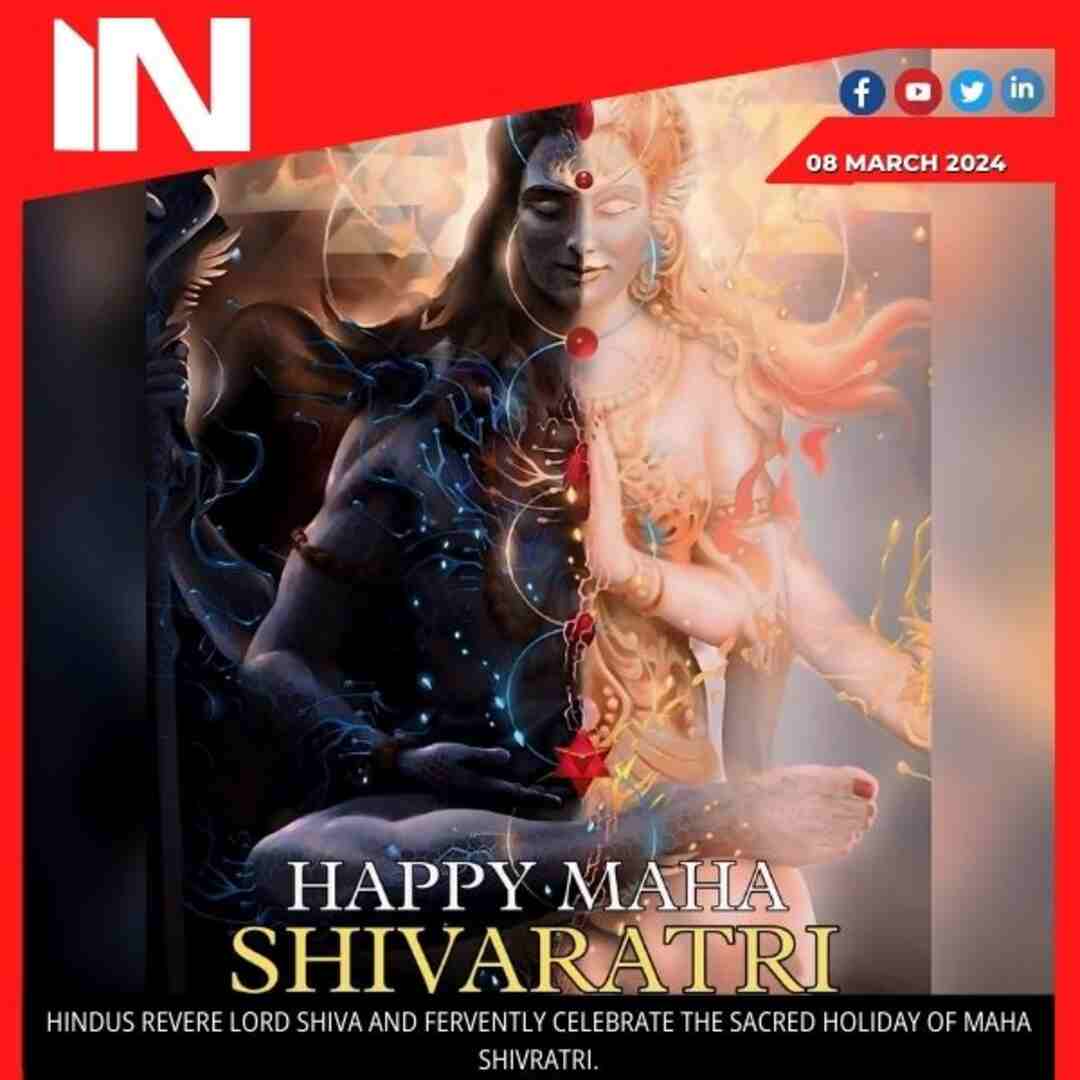Mahashivratri, also known as the Great Night of Shiva, is a significant Hindu festival celebrated annually in honor of Lord Shiva, one of the principal deities of Hinduism. This auspicious occasion holds deep spiritual and cultural significance for millions of devotees around the world.
Observed on the 14th night of the dark fortnight in the Hindu lunar month of Phalguna or Maagha (February or March in the Gregorian calendar), Mahashivratri marks the convergence of Shiva and Shakti, symbolizing the cosmic union of masculine and feminine energies. It is believed that on this night, Lord Shiva performed the divine dance of creation, preservation, and destruction.
Devotees observe Mahashivratri by fasting, performing prayers, and participating in various rituals dedicated to Lord Shiva. Many devotees visit temples dedicated to Lord Shiva, where they offer special prayers and perform Abhishekam, the ritualistic bathing of the Shiva Lingam (an iconic representation of Lord Shiva) with milk, water, honey, and other sacred substances.
Throughout the night, devotees chant sacred hymns and mantras, such as the “Om Namah Shivaya,” seeking the blessings of Lord Shiva for spiritual growth, inner peace, and fulfillment of desires. It is believed that sincere worship and devotion on Mahashivratri can absolve devotees of their sins and bestow divine grace upon them.
Mahashivratri is also associated with various legends and mythological stories depicting the power and benevolence of Lord Shiva. One popular legend narrates the tale of the Samudra Manthan (churning of the ocean) where Lord Shiva drank the poisonous Halahala to save the universe from destruction, thus earning him the title of Neelkanth (the one with a blue throat).
Apart from its religious significance, Mahashivratri is a time for introspection, self-reflection, and spiritual renewal. It encourages devotees to transcend worldly attachments and connect with the divine essence within themselves.
In addition to its religious observance, Mahashivratri is celebrated with fervor and enthusiasm through cultural events, music, dance performances, and spiritual discourses. It serves as a reminder of the eternal principles of righteousness, compassion, and selflessness embodied by Lord Shiva.
Mahashivratri holds a special place in the hearts of millions of devotees worldwide, serving as a profound reminder of the omnipresence and benevolence of Lord Shiva, the supreme destroyer and liberator who symbolizes the eternal cycle of creation, preservation, and transformation.
Maha Shivratri, one of the most significant and revered festivals in Hinduism, is celebrated with immense devotion by millions of people worldwide. Dedicated to Lord Shiva, the god of destruction and transformation, this sacred night marks the convergence of divine energies. Devotees fast, pray, and meditate, seeking Lord Shiva’s blessings for spiritual growth, prosperity, and protection.
On this night, temples are adorned with flowers and lights, and a special prayer ceremony, known as the “Shiva Aradhana,” is held. People chant mantras like “Om Namah Shivaya” to invoke Lord Shiva’s presence and seek his grace. The night is believed to be spiritually powerful, providing an opportunity to overcome darkness and ignorance and attain enlightenment.
Maha Shivratri also signifies the victory of good over evil, symbolizing the eternal cosmic dance of creation, preservation, and destruction. For those to all of you come have observing the fast, it is a time of inner reflection and devotion, a sacred bond between the worshiper and the divine.
Maha Shivratri is more than just a festival; it’s a celebration of faith, unity, and the devotion that binds millions of Hindus together in reverence to Lord Shiva.
#MahaShivratri #LordShiva #HinduFestival #SpiritualAwakening #OmNamahShivaya #ShivaBlessings #Devotion #SacredNight #GoodOverEvil #FaithAnd
Group Media Publications
Entertainment News Platforms – anyflix.in
Construction Infrastructure and Mining News Platform – https://cimreviews.com/
General News Platform – https://ihtlive.com/
Podcast Platforms – https://anyfm.in


 Ranbir Kapoor1 month ago
Ranbir Kapoor1 month ago
 Mahakumbh4 weeks ago
Mahakumbh4 weeks ago.jpg)
.jpg) Bollywood3 weeks ago
Bollywood3 weeks ago
 Sunny Leone4 weeks ago
Sunny Leone4 weeks ago
 American Dream3 weeks ago
American Dream3 weeks ago
 Parineeti Chopra1 month ago
Parineeti Chopra1 month ago
 Pahalgam Attack4 weeks ago
Pahalgam Attack4 weeks ago
 Ajith Kumar3 weeks ago
Ajith Kumar3 weeks ago







.1.jpg)










